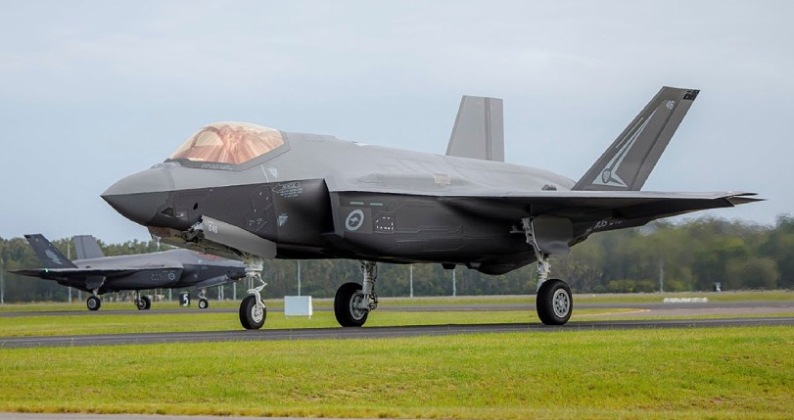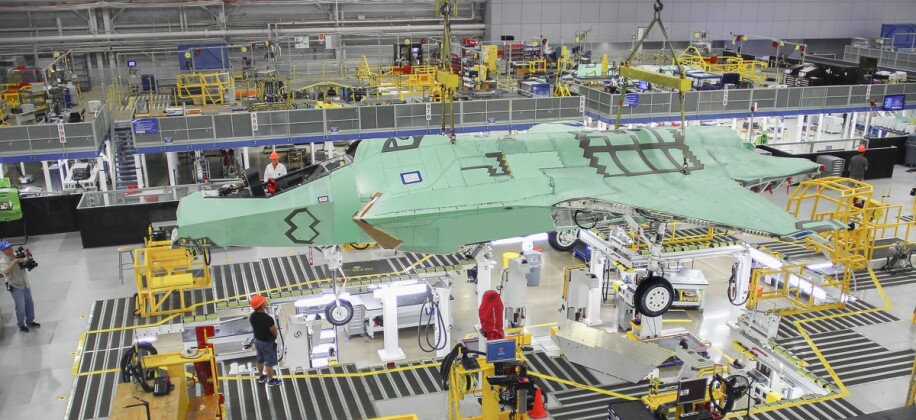News
Why Canada is Paying Over $600 Million For Each F-35 Stealth Fighter – And Potentially Much More
Following a report from the Canadian parliamentary budget officer on November 2 that the country’s acquisition of Lockheed Martin F-35A fifth generation fighters from the United States would close the country an estimated $53 billion American dollars, the implications of the expense and not insignificant possibility of large cost overruns have been cause for considerable concern. Although the Canadian Defence Ministry will acquire 88 fighters and associated equipment for $14.2 billion, or around $161 million per aircraft, the F-35’s notoriously high operational costs for a single engine jet mean that over its lifetime the fleet is expected to set the treasury back by close to $39 billion in further expenses. Purchasing each aircraft and its associated equipment thus only accounts for around a quarter of its cost, with each over its lifetime set to cost over $600 million. The budget officer’s report notably highlighted one of the F-35 program’s most outstanding shortcomings – namely that the aircraft originally conceptualised to have comparable operational costs to the F-16s and F-18s it was intended to replace is far more costly to fly and maintain, which has made replacing F-16 units across the U.S. Air Force wholly unaffordable forcing the service to consider other alternatives.

The estimate of $53 billion could notably rise significantly not only due to the not the insignificant possibility of accidents, with some crashes having been directly caused by the F-35’s software issues, but also because new operational issues have resulted both in the need for costly modifications and in further increases to operational costs. A notable example of a design flaw which significantly raised operational costs was the insufficient cooling capacity of the fighter’s F135 engine, with a report in June by auditors from the U.S. Government Accountability Office finding that this had caused $38 billion in additional operational costs in the American fleet alone. The additional maintenance costs from the issue are set to only increase as the F-35 begins to be fielded at the Block 4 standard from 2024 due to the new modification’s higher cooling and power requirements, with this issue growing until the engine is replaced. Further causes of unexpected additional operational costs are expected to continue to materialise.

The lifetime costs of Canadian F-35s is notably projected to be significantly lower than for those in the U.S. Air Force as the Defence Ministry is planning to fly the aircraft for significantly fewer hours per year, with pilots set to rely significantly more on simulators. The parliamentary budget officer himself warned, however, that if the Royal Canadian Air Force flew its F-35s outside the limits defence planners expected the lifetime costs would be higher. Delays could also increase costs significantly, with the officer observing: “Should there be delays in the delivery of these fighter jets for whatever reason, if there’s a slippage by a year, that would increase costs [by] about $400 million. Or should there be a two-year slippage, the increase in costs should be about $700 million.” As a result of serious shortfalls in production, delays approving the fighter for production on a larger scale, and the very large numbers of orders from across countries operating NATO standard fighter fleets, most of which are seeking to replace their F-16s, deliveries of Canada’s F-35s is not expected to completed until over ten years after the order was placed in mid-late 2032. The precedents set by American fighter deliveries in recent years, however, indicate that delays to significantly past that date are highly likely.

The Canadian Defence Ministry moved forward with plans to acquire F-35As in March 2022, following a protracted years long selection process, with the aircraft acquired to replace the country’s ageing fleet CF-18C/D Hornet fourth generation fighters which had served since the 1980s. Three of the other four Western air forces operating F-18C/Ds, those of Australia, Switzerland and Finland, notably also selected the F-35A, with the fourth Spain increasingly expected to follow suit. The F-35’s position as the only NATO compatible post fourth generation fighter in production has allowed it to consistently win tenders against other Western fighter classes, with its avionics and stealth capabilities particularly setting it apart. Canada previously invested in the F-35 program as an industrial partner, paying $613 million into the program from 1997-2021 despite not committing to any purchases, although Ottawa distanced itself from committing to acquisitions in the 2010s with Prime Minister Justin Trudeau going as far as to slam the fighter as “an aircraft that does not work and is far from working.” The latest report on expected costs has re-ignited controversies surrounding the purchase.












